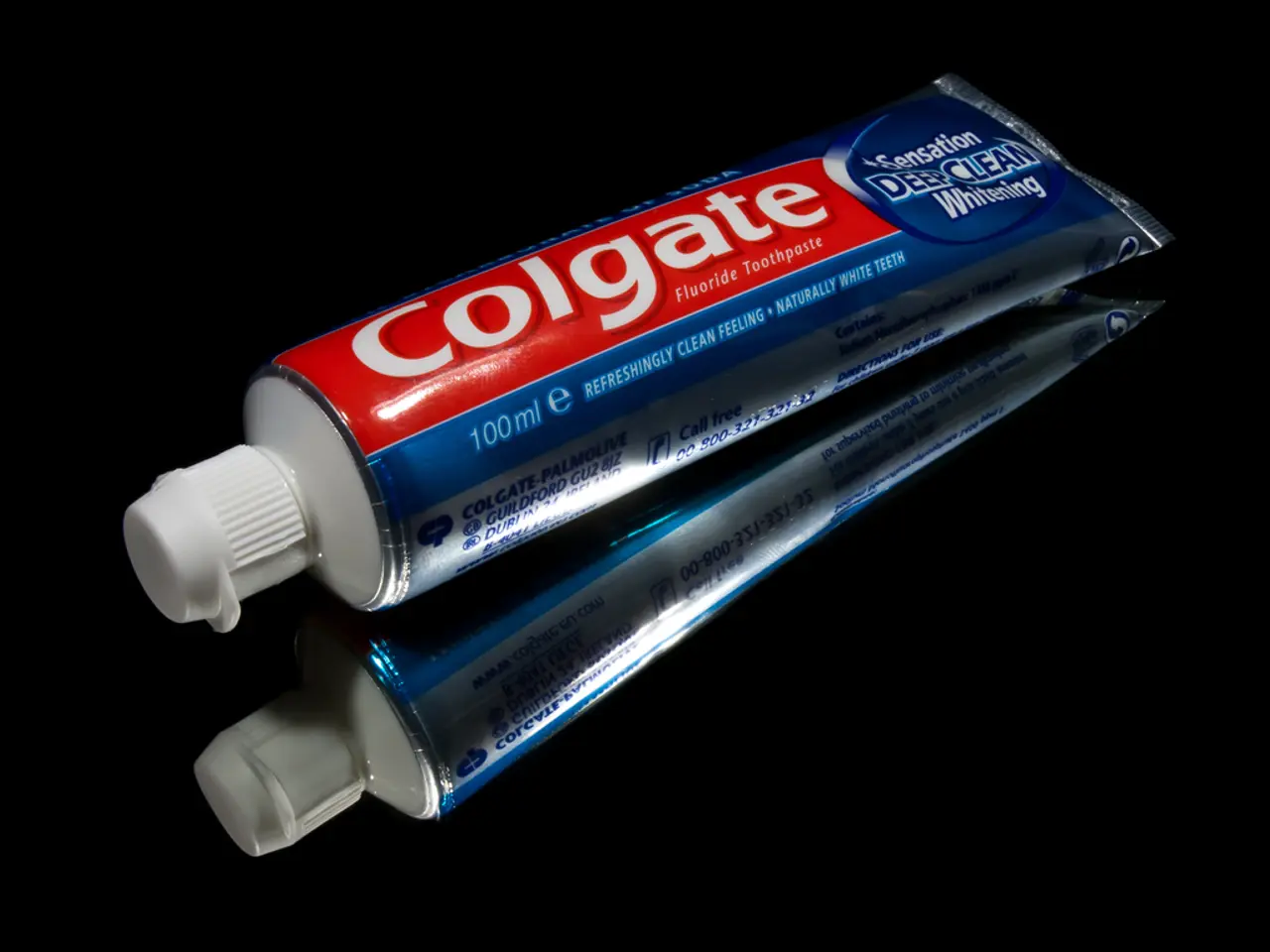The Safety of Titanium Dioxide in Toothpaste?
Titanium dioxide (TiO2) is a common ingredient in many toothpaste brands, used primarily as a whitening pigment and texture improver. However, concerns about its safety, particularly related to potential genotoxicity (DNA damage potential) and carcinogenicity (cancer risk), have led to regulatory scrutiny and some bans, such as in food products in the European Union [2][4].
The European Medicines Agency is expected to reassess TiO2 in cosmetics, including toothpaste, which may influence future regulations on this ingredient [1]. While the International Agency for Research on Cancer (IARC) classifies TiO2 as a Group 2B possible carcinogen based on inhalation studies in animals, the risk from toothpaste ingestion or topical application is less clear but still under review by authorities like the US Food and Drug Administration [1][2][4][5].
TiO2 nanoparticles, smaller particles that can penetrate biological systems more easily, have raised additional concerns due to their potential to cause oxidative stress or DNA damage, contributing to genotoxicity worries [2][5]. Environmental persistence and accumulation of TiO2 particles, including in food and water, amplify these safety debates.
In response to these concerns, some manufacturers are voluntarily removing TiO2 from children's toothpaste due to growing consumer pressure [1]. Consumers can choose toothpastes labeled free of titanium dioxide (look for "CI 77891" or "Titanium Dioxide" on the ingredient list) [1].
Natural alternatives like hydroxyapatite-based tooth powders are gaining attention as safer options [1]. These products often emphasize oral health effectiveness and sustainability rather than cosmetic whitening. Other safe whitening agents and cleaning substances, such as hydrated silica, calcium carbonate, or natural extracts, are also used in titanium dioxide-free toothpastes [1].
Monitoring ongoing regulatory updates on titanium dioxide is recommended for those concerned about potential risks [1]. The specific formulations in toothpaste may limit the risk posed by TiO2 nanoparticles [5]. However, the long-term effects of low-level ingestion of TiO2 are not fully studied [1].
In Germany, the Federal Institute for Risk Assessment has stated no conclusive evidence shows harm from TiO2 in toothpaste [1]. Despite this, the debate surrounding TiO2's safety continues, and consumers wanting to avoid this ingredient can select from growing options of titanium dioxide-free toothpastes focused on oral health rather than color [1][2][5].
References:
[1] European Commission. (2021). Commission proposes to restrict the use of titanium dioxide (TiO2) in food. European Commission. Retrieved from https://ec.europa.eu/commission/presscorner/detail/en/IP_21_4963
[2] European Food Safety Authority. (2016). Scientific Opinion on the re-evaluation of the safety of the food additive titanium dioxide (E171). EFSA Journal, 14(12), 4830. Retrieved from https://efsa.onlinelibrary.wiley.com/doi/10.2903/j.efsa.2016.4830
[4] International Agency for Research on Cancer. (2016). IARC Monographs on the evaluation of carcinogenic risks to humans. Volume 115: Titanium dioxide. Lyon, France: International Agency for Research on Cancer. Retrieved from https://www.iarc.fr/wp-content/uploads/2018/07/MonographVolume115-1.pdf
[5] United States Food and Drug Administration. (2021). Titanium dioxide. FDA. Retrieved from https://www.fda.gov/food/ingredientspackaginglabeling/food-additives/ucm079543.htm
- The European Medicines Agency is examining the safety of titanium dioxide (TiO2) in cosmetics, including toothpaste, which could influence future regulations on this ingredient.2.concerns about the potential genotoxicity and carcinogenicity of TiO2 have led to regulatory scrutiny, with bans in certain food products, and are under review by authorities such as the US Food and Drug Administration.
- TiO2 nanoparticles, smaller particles that can penetrate biological systems more easily, have raised additional concerns due to their potential to cause oxidative stress or DNA damage, contributing to genotoxicity worries.
- In response to these concerns, some manufacturers are removing TiO2 from children's toothpaste due to growing consumer pressure.
- Natural alternatives like hydroxyapatite-based tooth powders are gaining attention as safer options, as these products often emphasize oral health effectiveness and sustainability rather than cosmetic whitening.




